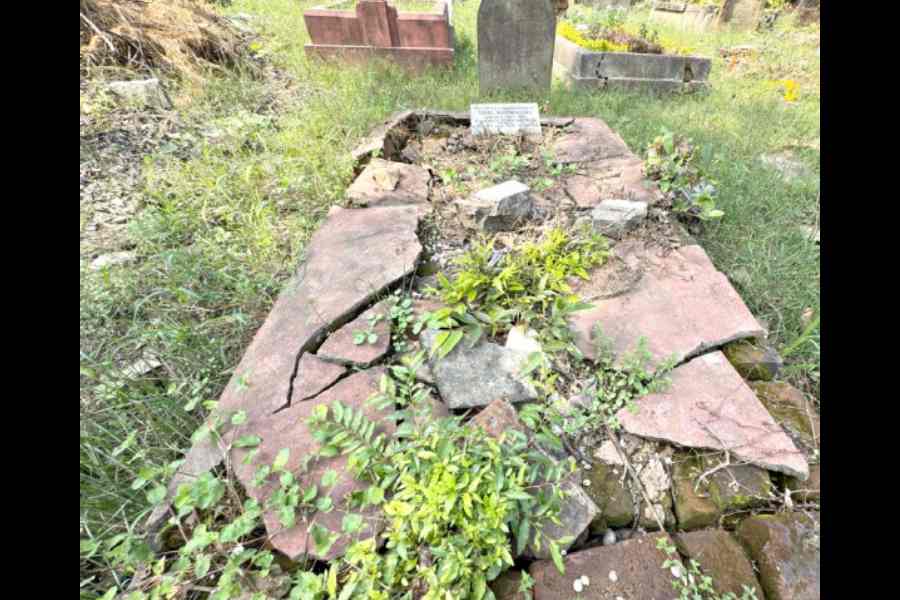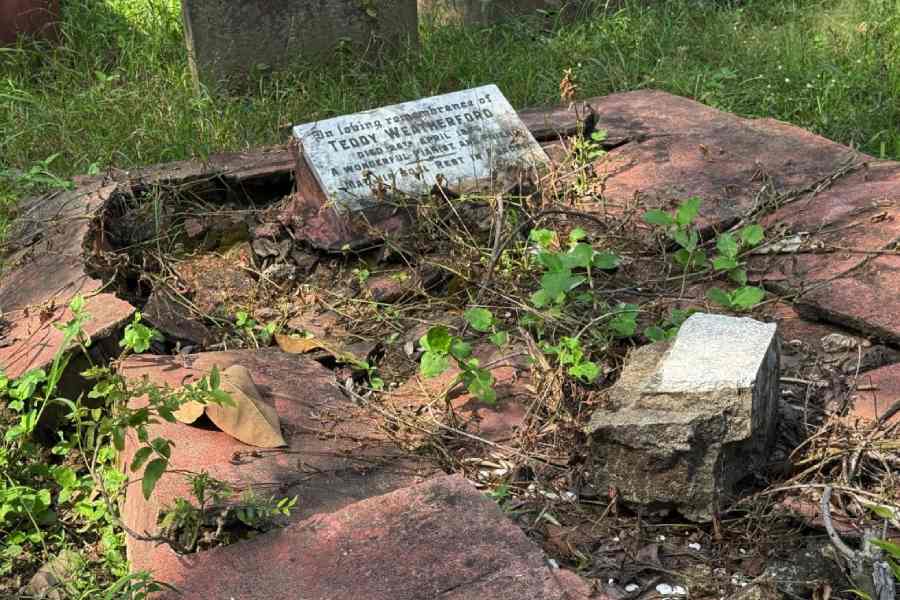Lost between tales of World War II and its aftermath were the efforts Teddy Weatherford made to popularise jazz in India in the 1930s and 40s.
One moment he was making music with Louis Armstrong in the 1920s and another, death proved to be the great leveller by snuffing out the life of the great jazz pianist, giving him a permanent place in a corner of Lower Circular Road Cemetery.
But for how long?
In a shambles, vegetation is overpowering the grave in an otherwise well-maintained cemetery. This is the man who made Calcutta dance to his piano as one tune after another filled the Grand Hotel between 1941 and 1945 until he died of cholera, aged 41.
Calcutta was, however, not Weatherford’s first choice.
A steady flow of Black American jazz musicians began to reach Europe in the early 1930s, like Duke Ellington’s orchestra and Armstrong. But the man with a solid foundation in his trade in 1920s Chicago had a date with Shanghai in 1926 where he spent many years.
He ultimately arrived in India in 1935, entertaining large audiences in Bombay where he played at the Taj Mahal hotel, the hub of the who’s who of the music world, like Crickett Smith and Roy Butler.
As 1941 was winding up, the vagabond heart decided to head to Calcutta.
Naresh Fernandes, the author of Taj Mahal Foxtrot: The Story of Bombay’s Jazz Age, told The Telegraph: “Weatherford was the most significant American jazz musician to perform in India in the 1930s and 40s. He stayed in India longer than other American jazz musicians who were also striking out in the subcontinent.”
“He led bands in both Bombay and Calcutta that included Indian musicians, playing a key role in helping local musicians understand the techniques and spirit of jazz,” Fernandes said.

Teddy Weatherford’s grave in Lower Circular Road Cemetery. Picture by Mathures Paul
The years Weatherford spent in Calcutta were highly productive. He put together a great band and recorded 70 sides for the Columbia label in this city between November 1941 and June 1944, some of which were solo work while others featured him as an accompanist.
This was also the period of the Bengal famine of 1943. Life was difficult on the street but Weatherford kept the music flowing in the hotel, entertaining the swish elbow-bending crowd, night after night.
For a moment, it appeared that Calcutta may even become more than just a stop. It was here that he married an Anglo-Indian named Pansy Hill.
The problem with Weatherford was he didn’t take instructions well. By 1945, Calcutta was in the grip of a cholera epidemic. He turned a blind eye to warnings about avoiding consumption of water from taps. On April 20, he complained of abdominal pain and was taken to Presidency General Hospital where his condition deteriorated over the next few days. Five days later he passed away.
Calcutta didn’t want Weatherford to leave and it’s said that thousands accompanied his funeral cortege to Lower Circular Road Cemetery.
The decades that followed were unkind to the memory of the great man as American musicians disappeared from the club scene in Calcutta and Bombay.
Another forgotten musician from the golden era of jazz in India was Herb Flemming, a significant American musician who had performed in Calcutta in the early 1930s.
It’s not known if Weatherford and Pansy had children or if his family ever visited Calcutta after his death.
What becomes of his grave? Nobody knows and all we can do is take comfort in the words of Regius professor of divinity at Oxford University and author Henry Scott-Holland: “Death is nothing at all…. I am but waiting for you, for an interval, somewhere very near, just round the corner.”










